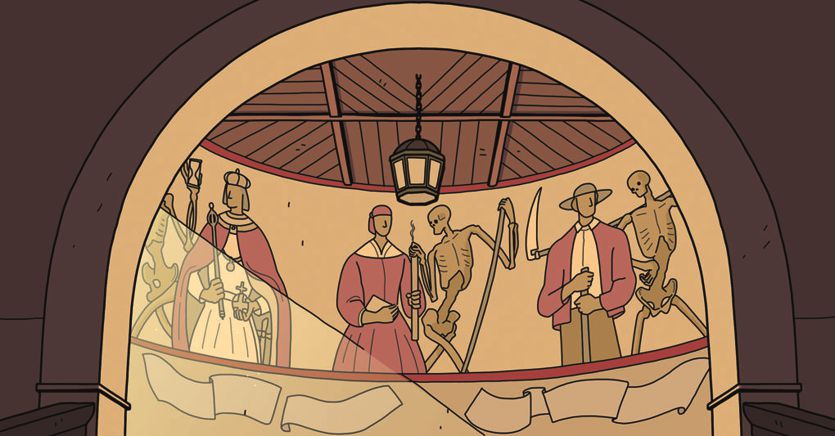The name of Rudolf Stolz has not remained in the history of art, since his entire existence denies the idea of history. He could be considered in the same way as those musicians who day after day composed, for a court or for a church, contradanzas and motets, soli Deo Gloria and satisfied with their craftsmanship. He was born in Bolzano in 1874, son of a painter and decorator; he had two brothers, painters and decorators in their turn.
Throughout his life, which was long and industrious, he frescoed vaults, painted chapels, designed peasant fêtes galantes, painted playing cards and cartouches and harlequins and fables with the fox and grapes and shy country idylls on the walls of houses, hotels, inns. The beautiful figures on the facade of the Farbenhaus Amonn in Bolzano, in Piazza del Municipio, are by her. She never went further than Milan, Breslau, Gdańsk; the most important commission of her life were the frescoes for Innsbruck station, which the Allied bombs reduced to rubble. Once, in the 1920s, her works passed through the pavilion of the Vienna Secession, with which she had little in common. He was small in stature, robust, silent; he had five daughters, one of whom was a painter; she played the Viennese Zither and the cello; his mother had taught him Italian, but over the years he had forgotten it; he had little inclination for practical things, money, strategies for obtaining work. He died in Moso in 1960: in the small but exemplary Rudolf Stolz Museum in Sesto there is a photograph of the funeral procession.
It’s almost midday and the Totentanz in the rotunda receives the glare of the sun outside. Seven characters, the king, the beguine, the farmer, the newborn, the traveler, the young bride, the bishop, are depicted with their attributes and next to each one is Death, stripped or loaded with a scythe and hourglass, and acts as a companion . The soft colors of the fresco, where the earthy tone is scratched by blades of blue, strip the story of any macabre connotation. Death is a sinuous, mobile, trembling figure, made of indistinct gelatinous matter around the skeletal structure, and is ironic and gentle: he holds the bishop’s crozier, he embraces the traveller, he puts out the beguine’s candle with his fingers. And the more the eye gets used to the scene, the more one reads the German phrases in the scrolls, proverbs and sentences about the last hour, the more time stops in contemplation and calms down, and the more one is struck by dismay. The tenderness of Death who holds the newborn and sings him the lullaby, “Sleep, sweet angel, you will wake up in Paradise”, gives shivers. Those figures, frescoed in 1924, seem to be charged with a very ancient legacy, the genre of the Germanic Totentanz, the medieval demons in the parish churches, something atavistic, pre-Christian: and frightening. It is not Death that is reabsorbed into the cycle of life, but life that confesses how fragile, transient and grotesque it is in giving itself so much importance, in the face of the seductive softness of Death, which always has the upper hand.
An open passage in the perimeter of the roundabout and we are once again under the open sky: it is the cemetery of Sesto, the most colorful and festively sparkling one you can imagine. On the facade of the church the statues of the Madonna and the saints shine in green, blue and scarlet. The cemetery, surrounded by family chapels (some of which are frescoed by Stolz) and filled with wrought iron and gold leaf crosses, is a wonderful botanical garden where, once again, nothing evil can happen. The sculpted figures have faces and complexions of strong mountain men, the paint glistens in the harsh sun. A sculptural group of naive realism reveals the naked body of the damned surrounded by flames: they seem to be dancing and the women have scarlet lips and plump tits. Music is the chirping of insects. Around us, very high, the eternal peaks of the mountains.
In the little church a painting that adorns an old clock reads: “Omnes vulnerant, ultima necat”, “They all wound, the last one kills”, and it is while we read these words that midday strikes.
